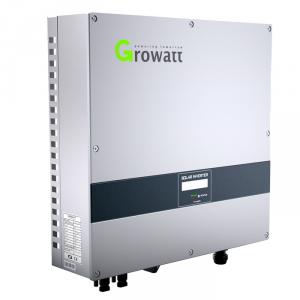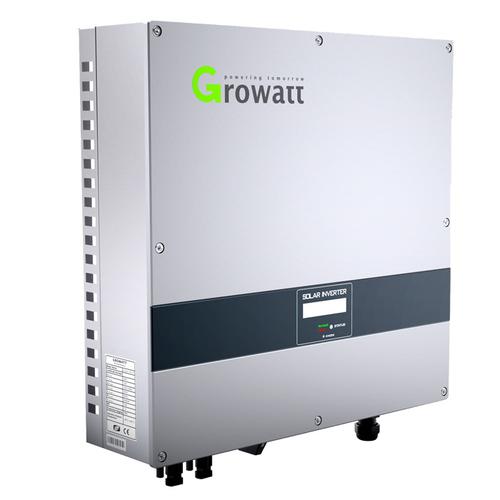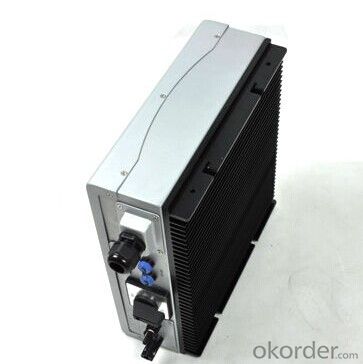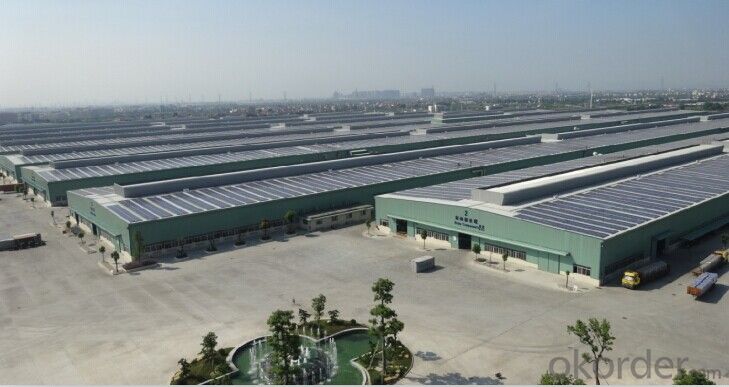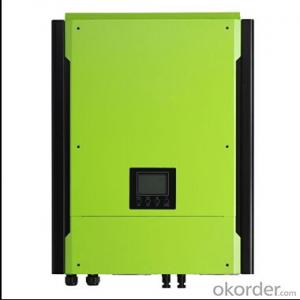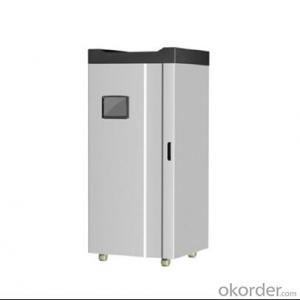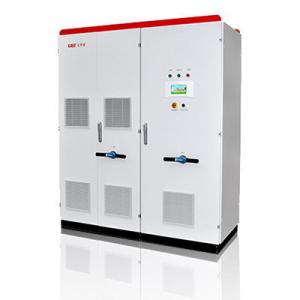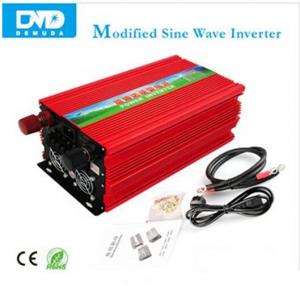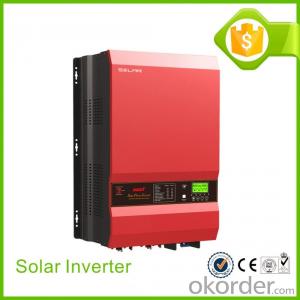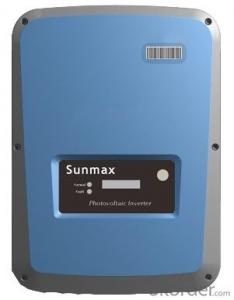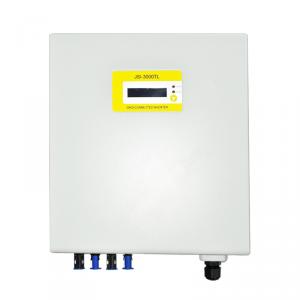3k Solar Inverter with Transformer 2000HF-3000HF
- Loading Port:
- Shekou
- Payment Terms:
- TT or LC
- Min Order Qty:
- 10 pc
- Supply Capability:
- 10000 pc/month
OKorder Service Pledge
OKorder Financial Service
You Might Also Like
Solar inverter with transformer 2000HF-3000HF
Specifications
>Maximum efficiency of 96%
>DC switch optional
>High frequency transformer topology
>MTL-String
>Bluetooth technology
Leading - edge Technology
>Maximum efficiency of 96% and wide input voltage range
>DC switch optional
>High frequency transformer topology
>MTL-String
>Bluetooth technology
>Sound control
>Fanless cooling concept
>Easy installation
>High reliability
>Bluetooth technology

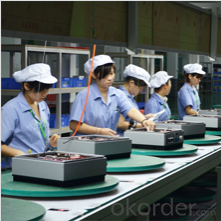
| Model | 2000HF | 2500HF | 3000HF |
| Max. DC power | 2100W | 2600W | 3170W |
| MAX. input current | 12A | 15A | 15A |
| Numbers of MPP tracker | 1 | ||
| Nominal DC voltage | 450 VDC | ||
| Maximum PV open voltage | 600V | ||
| MPPT voltage rang (Vdc) | 175~500 | ||
| MPPT efficiency at output > 10% | > 99% | ||
| System start-up voltage | 100VDC | ||
| Working voltage range(Vdc) | 100 ~ 600 | ||
| Initial feeding voltage | 200 VDC | ||
| Shutdown voltage | 70 VDC typical | ||
| DC voltage ripple | < 5% | ||
| Output data (AC side) | |||
| Model | 2000HF | 2500HF | 3000HF |
| Nominal output power ( 230V/50Hz) | 2000W | 2500W | 3000W |
| Maximum output power | 2000VA | 2500VA | 3000VA |
| Nominal AC voltage | 220V, 230V, 240V | ||
| Operational AC voltage range | 180V~280V | ||
| Operational AC frequency range | 45Hz~65Hz | ||
| AC power frequency | 50Hz/60Hz | ||
| Rated power frequency/Rated power voltage | 50Hz/230V | ||
| Maximum output current (AAC,RMS) | 11.4A | 14.2A | 15.0A |
| DC injection(mA, DC) | <0.5%< td=""> | <0.5%< td=""> | <0.5%< td=""> |
| O/P current distortion at full rating | <3%< td=""> | ||
| Power Factor at full rating | >0.99 | ||
| Active anti-islanding | yes | ||
| Model | Growatt | Growatt | Growatt |
| 2000 HF | 2500 HF | 3000 HF | |
| Night power consumption | <1w< td=""> | ||
| Maximum conversion efficiency (DC/AC) | 0.96 | 0.96 | 0.96 |
| European Efficiency | 0.955 | 0.955 | 0.955 |
| Topology | HF transformer | ||
| HF transformer | |||
| HF transformer | |||
| Protection degree | IP65 | ||
| IP65 | |||
| Operation temperature | -25 to 60ºC | ||
| Humidity | 0 to 95%, non-condensing | ||
| Heat Dissipation | Convection | ||
| Acoustic noise level | <25dba< td=""> | ||
| Altitude | Up to 2000m without power derating | ||
| Dimensions (W/H/D) in mm | 452/450/130 | 452/450/130 | 452/450/130 |
| Weight in kg | 17.06 | 17.06 | 17.06 |
| Certificates and Approvals | VDE0126 - 1 - 1 ,CE , RD1663 , G83 | ||
FAQ
1. Have any design tool and how to use it?
Shine Design is the system design software just for inverters, It can conduct installers to figure out panel numbers for a system, panel numbers for each string, and which inverter model is suitable for the system. Moreover, it can print a design report after input all necessary parameters, can calculate DC/AC wire wastage, annual generation, etc.
2. Does the inverter have monitoring solutions for residential system?
For small rating system, we have wired two monitoring solution (ShineNet via RS232 or RS485). (a) Local wireless monitoring solution (ShineVision via RF module communication) (b) Global wireless monitoring solution (WIFI module via WIFI network)
3. Do you have free solution for monitoring?
ShineNet is an inverter monitoring software run in Windows XP, Windows Vista, Windows 7 operating system. It can monitor inverter via RS232 (or RS232 convert to USB cable) and RS485 wire connection. Customers can purchase the cable locally to get the inverter monitored, it is simple.
- Q: Can a solar inverter be used with different types of backup power sources?
- Yes, a solar inverter can be used with different types of backup power sources. Solar inverters are designed to convert the direct current (DC) generated by solar panels into alternating current (AC) that can be used to power electrical devices. They can be integrated with various backup power sources such as batteries, generators, or the grid. This flexibility allows for a reliable and uninterrupted power supply, utilizing solar energy as the primary source while seamlessly switching to alternative power sources when needed.
- Q: Can a solar inverter be used in systems with different module capacities?
- Yes, a solar inverter can be used in systems with different module capacities. Solar inverters are designed to convert the DC power generated by solar modules into AC power for use in homes or businesses. They are typically flexible and compatible with a wide range of module capacities, allowing them to be used in systems with varying sizes and configurations. However, it is important to ensure that the inverter's capacity matches or exceeds the total capacity of the connected solar modules to ensure optimal performance and efficiency.
- Q: Can a solar inverter be used in grid-tied systems?
- Yes, a solar inverter can be used in grid-tied systems. In fact, it is a crucial component of such systems as it converts the DC power generated by solar panels into AC power that can be fed into the electrical grid.
- Q: How does a solar inverter affect the overall system performance in different weather conditions?
- A solar inverter plays a crucial role in the overall performance of a solar power system in various weather conditions. It helps optimize the conversion of direct current (DC) generated by solar panels into alternating current (AC) that is used to power homes and businesses. During sunny weather, a high-quality inverter ensures maximum power extraction from the solar panels, resulting in higher energy production and improved system performance. In contrast, in overcast or low-light conditions, a well-designed inverter can still efficiently convert the available solar energy, albeit at a reduced capacity. Moreover, advanced inverters often incorporate technologies like maximum power point tracking (MPPT) to adapt to changing weather conditions, ensuring optimal performance and energy generation regardless of weather variations.
- Q: Can a solar inverter be used with a smart home automation system?
- Yes, a solar inverter can be used with a smart home automation system. Many modern solar inverters are equipped with communication interfaces such as Wi-Fi or Zigbee, allowing them to integrate seamlessly with smart home automation systems. This integration enables homeowners to monitor and control their solar energy production, consumption, and storage remotely, and optimize their energy usage for increased efficiency and cost savings.
- Q: How does the weight of a solar inverter affect its installation process?
- The weight of a solar inverter can affect its installation process in a few ways. Firstly, a heavier inverter may require additional structural support or mounting equipment to ensure it is securely installed. This could involve reinforcing the mounting surface or using specialized brackets or racks. Secondly, the weight of the inverter may impact the ease of handling and maneuvering during installation, especially if it needs to be installed in elevated or hard-to-reach areas. Lastly, the weight can also impact the overall logistics of the installation, including transportation, lifting, and positioning of the inverter.
- Q: Can a solar inverter be used with both AC and DC power sources?
- No, a solar inverter is designed to convert DC power generated by solar panels into usable AC power for household or grid consumption. It cannot be used directly with DC power sources.
- Q: Can a solar inverter be used with a solar-powered electric gate system?
- Yes, a solar inverter can be used with a solar-powered electric gate system. The solar inverter is responsible for converting the DC power generated by the solar panels into AC power, which is required to operate the electric gate system. This allows the solar energy to be utilized efficiently in powering the gate system.
- Q: Can a solar inverter be used with a smart home system?
- Yes, a solar inverter can be used with a smart home system. Smart home systems are designed to integrate with various devices and technologies, including solar inverters. By connecting a solar inverter to a smart home system, users can monitor and control their solar energy production, track energy consumption, and optimize energy usage based on real-time data. This integration allows for increased energy efficiency and convenience in managing solar power within a smart home environment.
- Q: How do you calculate the maximum power point voltage for a solar inverter?
- To calculate the maximum power point voltage for a solar inverter, you need to determine the voltage at which the solar panels generate the maximum power output. This is done by varying the load resistance and measuring the corresponding power output. The maximum power point voltage is the voltage at which the power output is highest.
Send your message to us
3k Solar Inverter with Transformer 2000HF-3000HF
- Loading Port:
- Shekou
- Payment Terms:
- TT or LC
- Min Order Qty:
- 10 pc
- Supply Capability:
- 10000 pc/month
OKorder Service Pledge
OKorder Financial Service
Similar products
Hot products
Hot Searches
Related keywords
